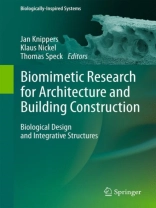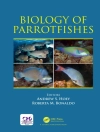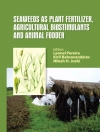This book comprises a first survey of the Collaborative Research Center SFB-TRR 141 ‘Biological Design and Integrative Structures – Analysis, Simulation and Implementation in Architecture’, funded by the Deutsche Forschungsgemeinschaft since October 2014. The SFB-TRR 141 provides a collaborative framework for architects and engineers from the University of Stuttgart, biologists and physicists from the University of Freiburg and geoscientists and evolutionary biologists from the University of Tübingen. The programm is conceptualized as a dialogue between the disciplines and is based on the belief that that biomimetic research has the potential to lead everyone involved to new findings far beyond his individual reach. During the last few decades, computational methods have been introduced into all fields of science and technology. In architecture, they enable the geometric differentiation of building components and allow the fabrication of porous or fibre-based materials with locallyadjusted physical and chemical properties. Recent developments in simulation technologies focus on multi-scale models and the interplay of mechanical phenomena at various hierarchical levels. In the natural sciences, a multitude of quantitative methods covering diverse hierarchical levels have been introduced. These advances in computational methods have opened a new era in biomimetics: local differentiation at various scales, the main feature of natural constructions, can for the first time not only be analysed, but to a certain extent also be transferred to building construction. Computational methodologies enable the direct exchange of information between fields of science that, until now, have been widely separated. As a result they lead to a new approach to biomimetic research, which, hopefully, contributes to a more sustainable development in architecture and building construction.
Jadual kandungan
1. Biomimetic Research: a Dialogue Between the Disciplines.- 2. From Minimal Surfaces to Integrative Structures – The SFB-TRR 141 in the Light of the Legacy of Frei Otto and the SFB 230 ‘Natürliche Konstruktionen’.- 3. Bionics and Biodiversity – Bio-inspired Technical Innovation for a Sustainable Future.- 4. Insect-Inspired Architecture – Insects and other arthropods as a source for creative design in architecture.- 5. In Search of some Principles of Bio-Mimetics in Structural Engineering.- 6. Fundamentals of Heat and Mass Transport in Frost-Resistant Plant Tissues.- 7. Plants and Animals as Source of Inspiration for Energy Dissipation in Load Bearing Systems and Facades.- 8. Adaptive Stiffness and Joint-Free Kinematics – Actively Actuated Rod-Shaped Structures in Plants and Animals and their Biomimetic Potential in Architecture and Engineering.- 9. Compliant Mechanisms in Plants and Architecture.- 10. Branched Structures in Plants and Architecture.- 11. The Skeleton of the Sand Dollar as a Biological Role Model for Segmented Shells in Building Construction: a Research Review .- 12. Continuous Fused Deposition Modelling of Architectural Envelopes Based on the Shell Formation of Molluscs: a Research Review.- 13. Analysis of Physcomitrella Chloroplasts to Reveal Adaption Principles Leading to Structural Stability at the Nano-Scale.- 14. Developing the Experimental Basis for an Evaluation of Scaling Properties of Brittle and ‘Quasi-Brittle’ Biological Materials.- 15. Evolutionary Processes as Models for Exploratory Design.- 16. Fabrication of Biomimetic and Biologically Inspired (Modular) Structures for Use in the Construction Industrie.- 17. Structural Design with Biological Methods: Optimality, Multi-Functionality and Robustness.- 18. Bio-Inspired Sustainability Assessment – a Conceptual Framework.- 19. Making Life “Visible”: Organism Concepts in Biology and Architecture as the Basis for an Interdisciplinary Synopsis of Constructional Biomimetics.- 20. Perceptual Orientation and Spatial Navigation in Dense Urban Environments
Mengenai Pengarang
Jan Knippers (corresponding editor), University of Stuttgart, Stuttgart, Germany
Klaus G. Nickel, University of Tübingen, Tübingen, Germany
Thomas Speck, University of Freiburg, Freiburg, Germany












